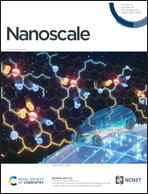Ni activated Mo2C by regulating the interfacial electronic structure for highly efficient lithium-ion storage†
Abstract
Regulating the electronic structure plays a positive role in improving the ion/electron kinetics of electrode materials for lithium ion batteries (LIBs). Herein, an effective approach is demonstrated to achieve Ni/Mo2C hybrid nanoparticles embedded in porous nitrogen-doped carbon nanofibers (Ni/Mo2C/NC). Density functional theory calculations indicate that Ni can activate the interface of Ni/Mo2C by regulating the electronic structure, and accordingly improve the electron/Li-ion diffusion kinetics. The charge at the interface transfers from Ni atoms to Mo atoms on the surface of Mo2C, illustrating the formation of an interfacial electric field in Ni/Mo2C. The formed interfacial electric field in Ni/Mo2C can improve the intrinsic electronic conductivity, and reduce the Li adsorption energy and the Li+ diffusion barrier. Thus, the obtained Ni/Mo2C/NC shows an excellent high-rate capability of 344.1 mA h g−1 at 10 A g−1, and also displays a superior cyclic performance (remaining at 412.7 mA h g−1 after 1800 cycles at 2 A g−1). This work demonstrates the important role of electronic structure regulation by assembling hybrid materials and provides new guidance for future work on designing novel electrode materials for LIBs.



 Please wait while we load your content...
Please wait while we load your content...